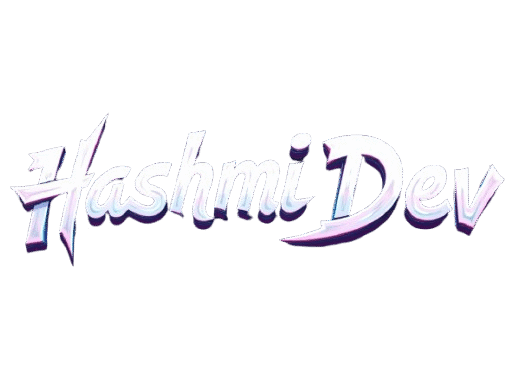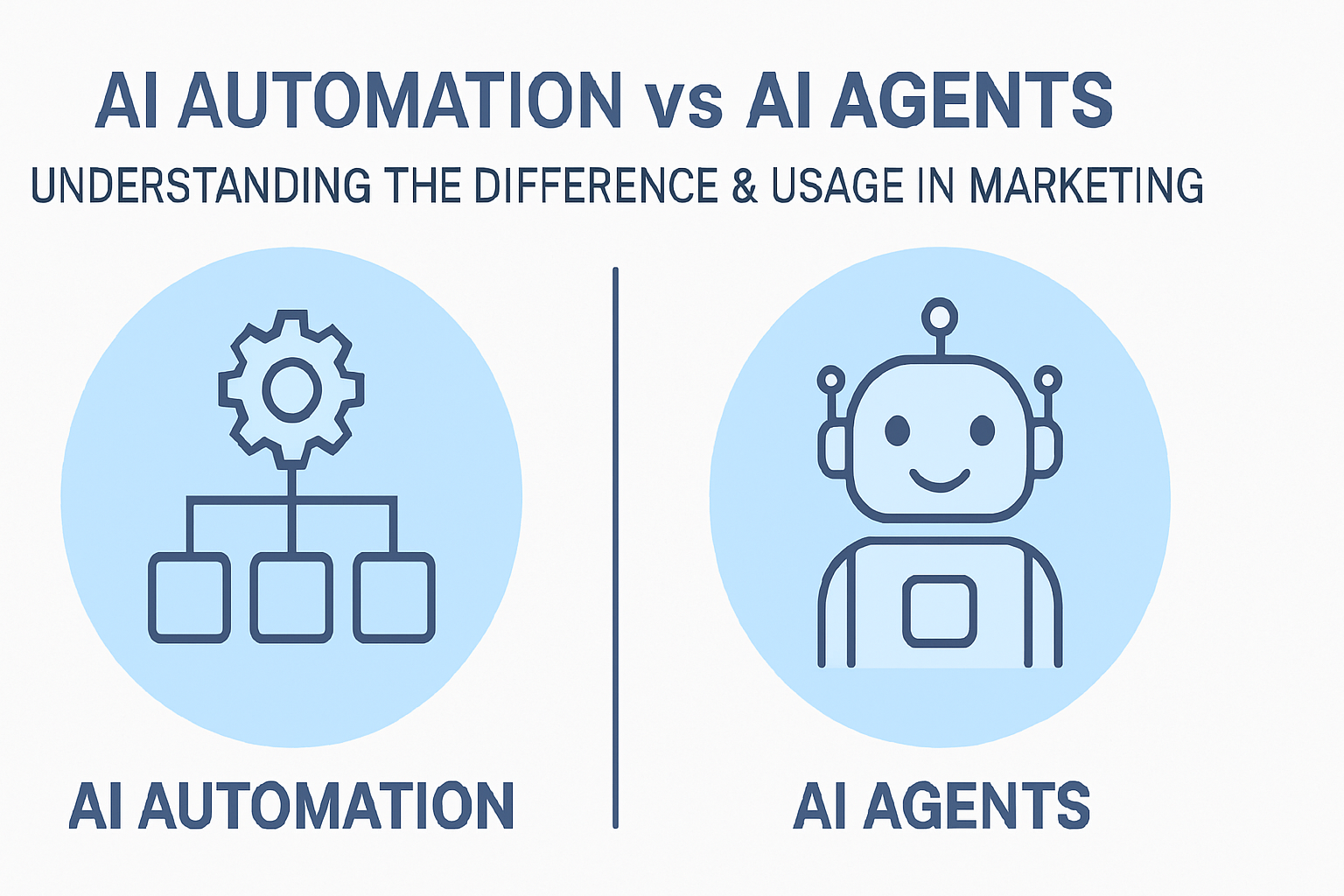If you’re a marketer in 2025, you’ve probably felt it — the never-ending treadmill of tasks. Scheduling social media posts, managing ad budgets, responding to leads, analyzing campaign performance… and doing it all before your coffee even gets cold. The pace is relentless, and the demand for personalized marketing at scale feels almost impossible to meet manually.
Without the right tools, it’s easy to fall behind. Leads slip through the cracks because your follow-ups aren’t instant. Campaigns underperform because you couldn’t tweak them in real time. Competitors are winning customers by delivering personalized experiences 24/7 — while you’re still trying to find time to write next week’s email newsletter.
That’s where AI Automation and AI Agents come in. These aren’t just buzzwords — they’re two distinct (but complementary) AI-powered approaches that can change how you work. The challenge is knowing when to use automation, when to deploy agents, and how to combine them for maximum marketing ROI.
By the end of this article, you’ll know the difference, see real-world examples, and get a clear action plan for using both in your own marketing.
What is AI Automation?
Think of AI Automation as your highly efficient assembly line worker. Once you set the process, it executes tasks consistently, without deviation, and without needing to “think” about them.
Definition:
AI automation uses artificial intelligence to perform repetitive or rules-based tasks faster, more accurately, and often at a much larger scale than humans could manage. While traditional automation follows fixed rules, AI-powered automation can learn from data and adjust to improve results.
Analogy:
Imagine a bakery with a machine that automatically kneads dough, bakes it, and packs it — all without you touching it. That’s automation. Add AI to it, and now the machine learns which recipes sell best, adjusts baking time based on humidity, and even suggests new flavors.
Marketing Examples of AI Automation:
- Email Campaign Workflows: Automatically sending welcome emails, abandoned cart reminders, and seasonal promotions.
- Ad Bid Optimization: Adjusting Google Ads bids in real time to get the best ROI.
- Lead Scoring: Automatically ranking leads based on likelihood to convert, so your sales team focuses on the right ones.
- Social Media Scheduling: Posting at the optimal times without you having to log in every day.
Key Strength:
AI automation excels at doing high-volume, predictable tasks with speed and precision. It’s about scale and consistency.
What is an AI Agent?
Now, imagine having a personal marketing assistant who not only follows instructions but also thinks, adapts, and makes decisions to help you achieve your goals. That’s an AI Agent.
Definition:
An AI agent is a system that perceives its environment, processes information, and takes actions autonomously to achieve specific objectives — often while adapting to changes in real time.
Analogy:
If automation is your bakery’s dough machine, an AI agent is your head baker. It decides which pastries to make today, experiments with new recipes, responds to customer feedback, and even calls the supplier when ingredients run low.
Marketing Examples of AI Agents:
- Chatbots with Personality: Handling customer inquiries, upselling products, and booking appointments while sounding human.
- AI Campaign Strategists: Analyzing past campaigns, suggesting creative changes, and even drafting ads for you.
- Market Research Assistants: Scanning online trends, competitor ads, and audience sentiment to suggest campaign ideas.
- Sales Support Agents: Following up with leads in a conversational way, answering objections, and guiding them to purchase.
Key Strength:
AI agents bring decision-making into the process. They’re proactive, adaptive, and capable of creative problem-solving — not just repetitive execution.
AI Automation vs AI Agents: The Core Differences
Here’s where marketers often get confused — both involve AI, but their roles are very different.
| Feature | AI Automation | AI Agent |
|---|---|---|
| Main Role | Executes predefined tasks | Makes decisions and adapts |
| Flexibility | Low–Moderate | High |
| Learning Ability | Learns patterns to improve efficiency | Learns, adapts, and strategizes |
| Best For | Repetitive, rule-based processes | Dynamic, complex tasks requiring judgment |
| Example in Marketing | Scheduling posts at optimal times | Designing a new posting strategy based on audience engagement |
In simple terms:
Automation = “Do this, exactly this, every time.”
Agent = “Here’s the goal — figure out the best way to achieve it.”
Real-World Marketing Use Cases
1. AI Automation in Marketing
- Email Sequences: A SaaS company uses AI automation to send onboarding emails at exactly the right intervals, adjusting content slightly based on user behavior.
- Ad Campaign Management: An e-commerce store automates bid adjustments on Facebook Ads to keep cost-per-click under $1.
- CRM Updates: Customer information is updated automatically after every interaction, ensuring data accuracy without manual input.
2. AI Agents in Marketing
- Lead Conversion Chatbot: A real estate firm uses an AI agent that chats with website visitors, asks qualifying questions, and books showings — without human intervention.
- Content Creation Partner: A marketing agency uses an AI agent to research trending topics, draft blog outlines, and suggest SEO keywords.
- Dynamic Personalization: An online fashion retailer’s AI agent changes homepage product recommendations based on each visitor’s browsing history.
Case Studies: The ROI in Action
Case Study 1 — Automation Boosting Ad ROI:
A mid-sized online furniture store implemented AI automation for Google Ads bid management. By letting the system adjust bids in real time based on performance, they reduced ad spend waste by 27% and increased sales by 18% in three months.
Case Study 2 — Agents Driving Engagement:
A travel agency deployed an AI chatbot agent on its website. It didn’t just answer FAQs — it suggested destinations, upsold packages, and collected customer preferences. This led to a 41% increase in lead conversion rate and 2.5x more engagement compared to their old static contact form.
Pros and Cons of Each
| AI Automation | Pros | Cons |
|---|---|---|
| Pros | Scales easily, consistent performance, reduces manual labor | Limited flexibility, can’t handle unexpected scenarios |
| Cons | – | – |
| AI Agents | Pros | Cons |
|---|---|---|
| Pros | Adaptable, proactive, capable of complex decision-making | Can be harder to train, requires more data, potentially higher cost |
| Cons | – | – |
When to Use Which (and How to Combine Them)
Use AI Automation when:
- You have repetitive tasks with clear rules.
- You want to scale a process without increasing manpower.
- Accuracy and speed matter more than creativity.
Use AI Agents when:
- You need strategic decision-making in real time.
- You want a system to adapt to changing conditions.
- You’re dealing with customer interactions that require personalization.
Combining Both for Maximum ROI — Example Workflow:
- AI Agent: Analyzes market trends and suggests a new ad strategy.
- Human Marketer: Approves the strategy.
- AI Automation: Launches the ads, monitors performance, and adjusts bids automatically.
- AI Agent: Reviews performance data weekly and suggests refinements.
Future Trends: Where AI in Marketing is Headed
- More Autonomous Agents: Expect AI agents to handle entire marketing campaigns from start to finish, with minimal human oversight.
- Predictive Automation: Automation tools will not just execute — they’ll predict what actions will yield the best results.
- Cross-Tool Communication: Agents and automation systems will increasingly integrate, sharing data to improve each other’s performance.
- Hyper-Personalization: Every marketing touchpoint will be individually tailored, often by AI agents, while automation ensures timely delivery.
Final Action Tips for Marketers
- Audit Your Current Workflow: Identify repetitive tasks that can be automated today.
- Experiment with an AI Agent: Try a chatbot, AI content writer, or virtual strategist for a single campaign.
- Combine for Power: Let agents strategize and personalize, while automation executes flawlessly.
- Start Small, Scale Fast: Begin with one or two tools, prove ROI, then expand.
- Keep the Human Touch: AI is powerful, but your brand voice and empathy still matter.
AI Automation and AI Agents are not competing tools — they’re teammates. Automation gives you speed and consistency. Agents give you creativity and adaptability. Together, they can turn your marketing from a constant game of catch-up into a well-oiled, ever-improving growth engine.






